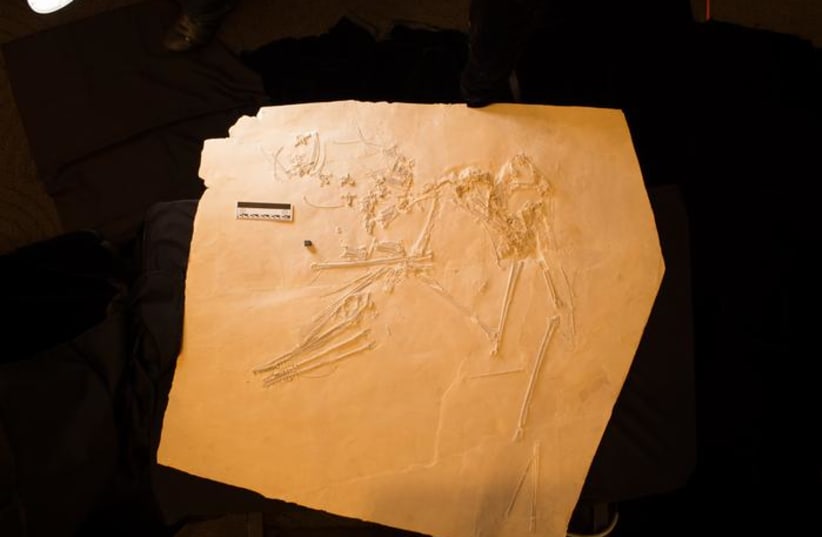A new 145-million-year-old pterosaur nicknamed "Elvis" received its official scientific name last week: Petrodactyle wellnhoferi (or "Wellnhofer’s stone-finger" in English).
The fossil of the flying reptile which once soared alongside the dinosaurs was first unearthed in Bavaria, Germany, with scientists naming it after the king of rock and roll due to a giant pompadour-like bony crest on its skull.
While the area the fossil was found in is now in the middle of dry land north of Munich, during the Jurassic period it was covered by a warm shallow sea, with reefs, lagoons, and islands. Hundreds of fossils of pterosaurs have been found in the area in the past 250 years.
The pterosaur's scientific name honored German paleontologist Peter Wellnhofer, who spent his career on German pterosaurs. Petrodactyle wellnhoferi is part of a group of pterosaurs called "ctenochasmatids" that were mostly small filter feeders.
"Peter Wellnhofer is long overdue having a species of German pterosaur named after him to honor his lifelong contribution to the study of these amazing animals," said Dr. David Hone of Queen Mary University of London, the lead author on the study.


The pterosaur's fossil was extremely complete, with nearly every bone preserved in stunning detail.
Elvis was bigger than most related pterosaurs
While many pterosaurs have bony crests which were primarily used as sexual signals, Elvis has the largest crest ever recorded in a ctenochasmatid. The pterosaur was unusually large in general, with a wingspan of around two meters, and still had room to grow as it was only a relative teenager by pterosaur standards.
“Big though this crest is, we know that these pterosaurs had skin-like extensions attached to it, so in life, Petrodactyle would have had an even larger crest," said Hone.
The scientists used UV light to get an even clearer look at the fossil, as such light makes it easier to distinguish between the fossil and the surrounding rock compared to natural light.
"The use of UV Induced Fluorescence digital photography provided the ability to discern fine structures small bones and provided additional information regarding the structures of the bony crest which aided in the interpretations and conclusions of this unique new species," said René Lauer of the Lauer Foundation, which acquires, curates, and provides access to a collection of paleontological specimens.
Scientists believe that Petrodactyle wellnhoferi lived on the shore of shallow seas, but may have also ventured into estuaries or lakes. It had a long jaw with many small teeth which it could have used to grab small fish, shrimp and other aquatic prey. It also had an expansion at the back of its skull for large jaw muscles, a feature lacking on most other ctenochasmatids.
Bruce Lauer of the Lauer Foundation, an author on the study, explained that “the specimen was located in a quarry which is producing scientifically important fossils that provide additional insights into Late Jurassic pterosaurs. This research is a great example of the benefits of cooperation between amateur collectors, commercial fossil dealers, our Foundation, and research scientists to advance science."
